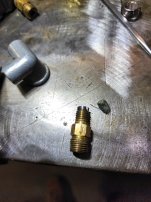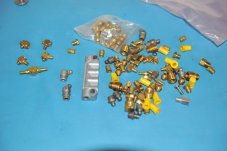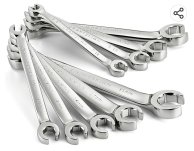I could use some coaching!
I'm rebuilding an Ex-Cell-O 602 mill and as I'm putting it together, I've run into a problem I don't know how to solve. The brass couplings that connect the way lube oil tubes have an arrow on them and I assume that is the for the direction of the way oil. Problem is, no oil passes thru them. Why would these be on the machine? I have dozens of them and no matter how many times I pump the lube handle, nothing comes out the way oil ports. Does anyone know why? What am I doing wrong? The ends with the cloth were full of gunk so I pulled the cloth out of one and still, no oil comes out? It does come out of the way oil case as I rebuilt the pump. Sign me confused....
I'm rebuilding an Ex-Cell-O 602 mill and as I'm putting it together, I've run into a problem I don't know how to solve. The brass couplings that connect the way lube oil tubes have an arrow on them and I assume that is the for the direction of the way oil. Problem is, no oil passes thru them. Why would these be on the machine? I have dozens of them and no matter how many times I pump the lube handle, nothing comes out the way oil ports. Does anyone know why? What am I doing wrong? The ends with the cloth were full of gunk so I pulled the cloth out of one and still, no oil comes out? It does come out of the way oil case as I rebuilt the pump. Sign me confused....








